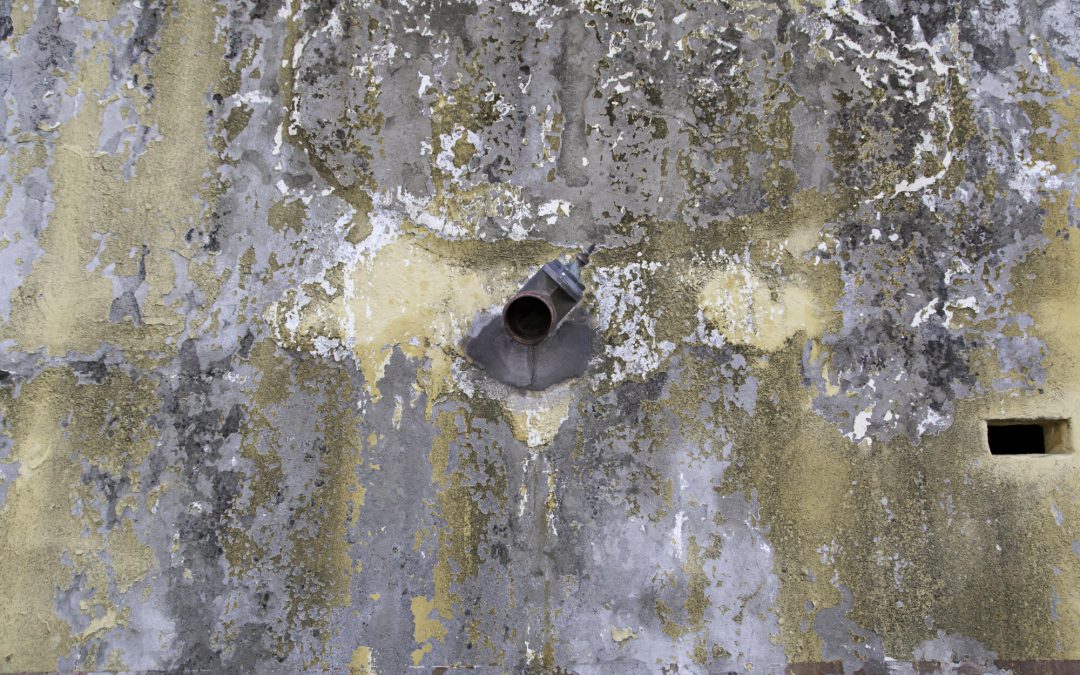Have you ever had your home professionally assessed for mold? Your home likely has some because, in the US, around 50-60% of homes have some level of mold growth.
Mold exposure is linked to various health issues, from respiratory problems and skin irritation to more severe allergic reactions. As a homeowner, the idea of mold growing on various surfaces within your home is concerning, but can mold grow on concrete? This question is crucial because concrete is a common material in many homes.
Luckily, this guide is here to help. Keep reading to discover everything you need about mold and concrete and how to safeguard your living spaces.
Can Mold Grow on Concrete?
Enough beating around the bush: can mold grow on concrete or not? The simple answer is yes.
When considering concrete mold growth, it’s essential to understand that concrete itself is not an organic material that mold typically feeds on. However, mold can grow on concrete surfaces under certain conditions. For instance, to thrive, mold requires:
- Moisture
- Oxygen
- A food source
While concrete does not provide nutrients, it can retain moisture and accumulate organic debris, supporting mold growth. For residential homeowners, this is a significant concern, especially in places where concrete surfaces are prevalent and may be subject to damp conditions, such as:
- Basements
- Garages
- Patios
What Does Concrete Mold Growth Look Like?
To spot concrete mold growth, check for musty odors and discolored spots. Let’s look at the common types of mold found in concrete here:
Black Mold
Black mold, scientifically known as Stachybotrys chartarum, is one of the most commonly encountered molds on concrete surfaces. It’s characterized by its dark, almost black coloration and a slimy texture when moist.
- Health Warning: Prolonged exposure to black mold can pose serious health risks, making prompt removal essential
Green Mold
Green mold encompasses several different mold species, including Aspergillus and Penicillium. Green mold often appears on concrete surfaces as a powdery or velvety layer, ranging from bright green to a more subdued, dark green hue. While not as toxic as black mold, green mold can cause health problems.
White Mold
White mold often looks like a fine, white dusting and can easily be mistaken for efflorescence, a salt deposit that forms when water evaporates from concrete, leaving behind mineral residues. Because it can be difficult to distinguish from efflorescence, professional evaluation may be necessary to confirm its presence.
Common Causes of Concrete Mold
Concrete mold growth happens when tiny mold spores float in the air, land on damp concrete, and begin to spread. When they find a wet surface, like concrete, they can start to grow.
Concrete is porous, meaning it has tiny holes where water can enter. When it rains, or there’s high humidity, the concrete can stay damp for a long time. This wetness gives mold the moisture it needs to grow.
Another cause of concrete mold growth is poor drainage. If water pools around the base of concrete walls or floors, it can seep into the concrete. This constant wetness makes a perfect home for mold.
Also, if there is not enough sunlight, the concrete stays cool and damp, further helping mold to thrive. Dust and dirt on the concrete can also provide food for mold, making concrete mold growth more likely.
Mold Risks on Concrete
Mold risks on concrete can be a big problem for homeowners. When mold grows on concrete, it doesn’t just look bad; it can cause real damage to the property.
For instance, mold can weaken concrete, making it less sturdy and more likely to crack or crumble. If not handled quickly, mold can lead to costly repairs and structural issues.
Homeowners should be concerned about mold risks on concrete because mold can also affect their health. Mold spores can spread through the air and cause allergies or respiratory problems, especially for people with asthma or weakened immune systems.
Finally, it can also create a musty smell that is hard to eliminate. This can be unpleasant, especially if you’re entertaining guests.
How to Prevent Mold From Growing on Your Concrete
So, what can you do to stop this mold problem from happening? To help you keep your home safe and clean, here are some mold prevention tips for preventing mold on concrete.
Keep the Concrete Dry
Moisture is mold’s best friend. To prevent mold on concrete, ensure your concrete floors and walls are dry by fixing leaks and using dehumidifiers in damp areas.
Improve Air Circulation
Good airflow helps keep surfaces dry. Use fans and open windows to let fresh air circulate in your basement or garage. This simple step is one of our most effective mold prevention tips.
Seal the Concrete
Apply a waterproof sealant to your concrete surfaces. This creates a barrier that stops moisture from seeping in.
Clean Regularly
Dirt and grime can hold moisture and encourage mold growth. To prevent mold spores from growing, clean your concrete surfaces regularly with soap and water.
Fix Drainage Issues
Ensure that water drains away from your home. Check gutters and downspouts to make sure they are working correctly. Proper drainage helps in preventing mold on concrete by keeping the area dry.
Use Mold-Resistant Products
Consider using mold-resistant paint or additives. These products can add extra protection to your concrete surfaces, preventing mold on concrete.
Monitor Humidity Levels
Use a hygrometer to monitor the humidity in your home. Aim to keep indoor humidity below 60% to prevent mold growth.
Concrete Steps to a Cleaner Environment
Can mold grow on concrete is a critical question, and understanding the causes and risks of concrete mold growth is crucial for homeowners. You can effectively safeguard your home by keeping the concrete dry, improving air circulation, and regular cleaning.
Concerned about mold in your home or office? Contact Elite Mold Services Inc. today for a comprehensive visual inspection by State-Licensed Mold Inspectors and Certified IAQ Specialists.
We meticulously check walls, plumbing areas, and HVAC systems for hidden moisture and microbial growth. Trust our experts to provide the most informative advice and resolve your mold or air quality issues effectively. Schedule your inspection today.

